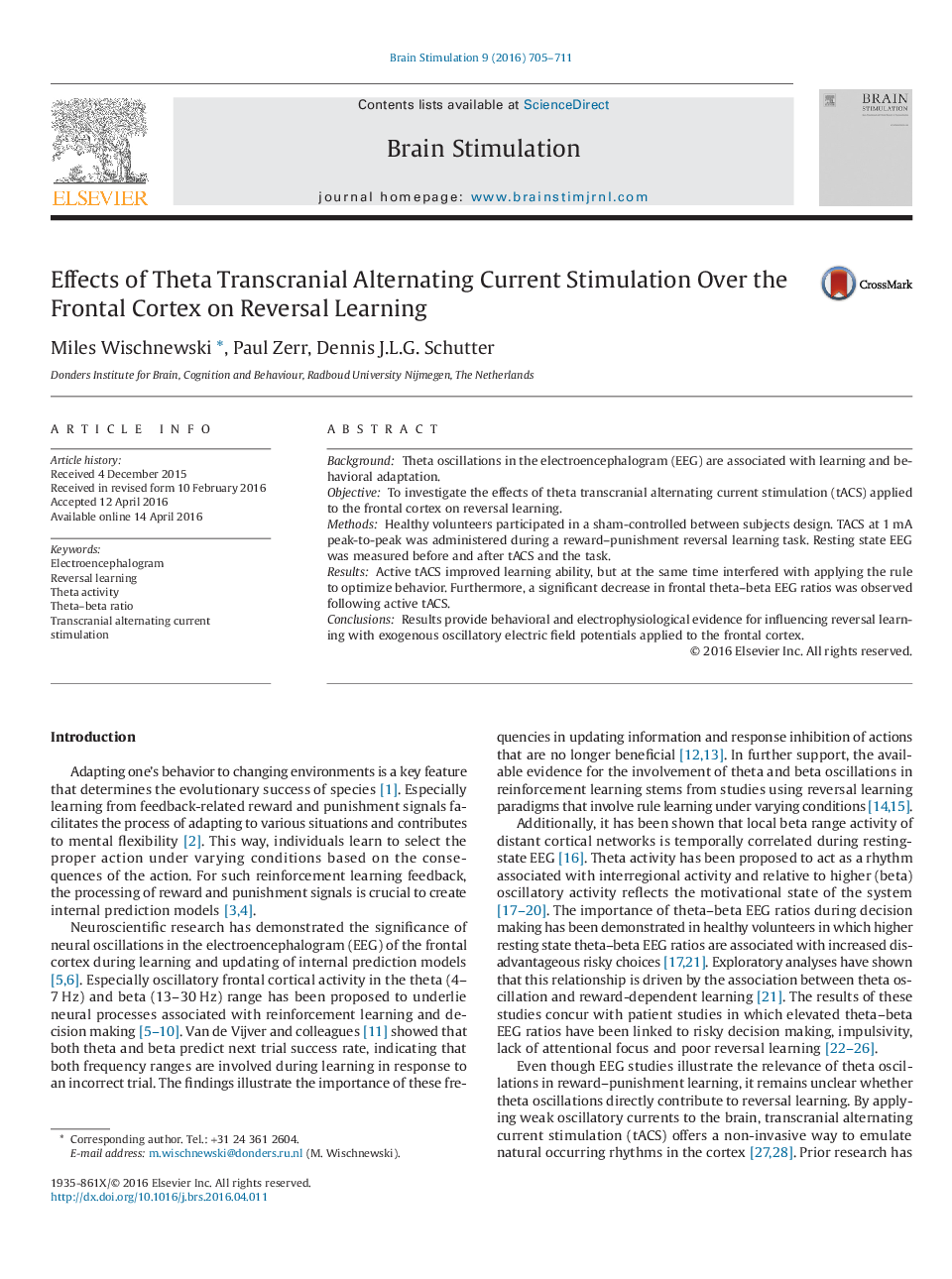| Article ID | Journal | Published Year | Pages | File Type |
|---|---|---|---|---|
| 3038695 | Brain Stimulation | 2016 | 7 Pages |
•tACS at theta frequency in the frontal cortex was used during reversal learning.•Compared to sham, theta stimulation increased reversal learning speed.•Compared to sham, theta stimulation decreased risk taking following reversal learning.•Theta–beta EEG ratio was significantly lower in the active tACS condition after stimulation.
BackgroundTheta oscillations in the electroencephalogram (EEG) are associated with learning and behavioral adaptation.ObjectiveTo investigate the effects of theta transcranial alternating current stimulation (tACS) applied to the frontal cortex on reversal learning.MethodsHealthy volunteers participated in a sham-controlled between subjects design. TACS at 1 mA peak-to-peak was administered during a reward–punishment reversal learning task. Resting state EEG was measured before and after tACS and the task.ResultsActive tACS improved learning ability, but at the same time interfered with applying the rule to optimize behavior. Furthermore, a significant decrease in frontal theta–beta EEG ratios was observed following active tACS.ConclusionsResults provide behavioral and electrophysiological evidence for influencing reversal learning with exogenous oscillatory electric field potentials applied to the frontal cortex.
